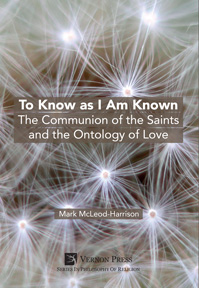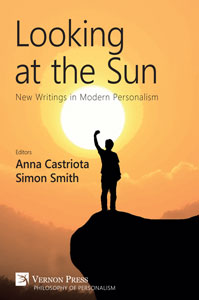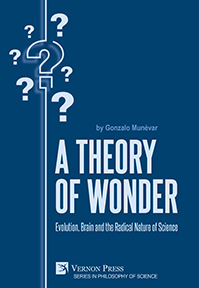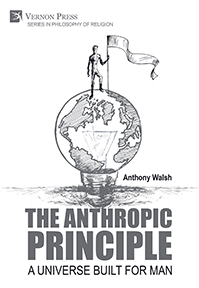Miracles and the Concept of Impossibility: The Resurrection and the Shroud of Turin
by Anthony Walsh (Boise State University)
Purchase this book
(click here to change currency)
Dr. Walsh sets up a convincing argument (with strong evidence) about the miracles of God. On their face, these miracles (resurrection, creation, life, etc.) seem to have an absence of scientific proof, but Dr. Walsh shows the connection points of scientific evidence to the miracles Christians understand. Atheists tend to use science to dismantle the truth of God, but Dr. Walsh uses science as a way to build up the truth of God. […] The science and layout of the book are solid […] The readability is inspiring without being too convoluted. I think it has broad appeal. Readers who are atheists or agnostics (and heavy into science) might not approach a book like this, but if they have open minds, I would think they would be interested (much like a Christian with an open mind should read scientific books that argue against these same miracles).
Dr. Jeremy Ball
Director of Business Development & Operations in Gen-D
'Miracles and the Concept of Impossibility' takes a fresh look at the miracle of the resurrection of Jesus. A miracle is inexplicable by the methods of science and thus deemed impossible. I examine the concept of impossibility with primary reference to David Hume’s notion that there is a boundary of probability beyond which the improbable becomes the impossible, calculated at 10150. Physicists have declared that the universe is inevitable and, at the same time, impossible. Its inevitability is obvious, but the mind-boggling improbability that a biocentric universe exists vastly exceeds the probability boundary. If a miracle is defined as an impossibility, the universe is a miracle. The origin of life is just as miraculously impossible because the probability of dead organic molecules evolving into the organic molecules of life is even less than it is for the existence of the universe.
This book also looks at what the Resurrection means in terms of the atonement and the concepts of hell and universal salvation. This is followed by an examination of the evidence for the Resurrection and historical and archaeological reasons for trusting the New Testament. Secular explanations of the Resurrection are examined and pitted against the Christian account in terms of their explanatory scope and power. The last two chapters look at the “silent witness” to the resurrection, the Shroud of Turin bearing the image of a terribly tortured and crucified man. For 125 years, scientists have been unable to discover how the image was imprinted on the cloth; thus, I conclude that it is the “silent witness” to the Resurrection—the authentic Shroud of Jesus Christ.
Foreword
Pastor Rick Flood
Compelled Church, Temperance, Michigan
Acknowledgements
Preface
Chapter 1 Miracles and the Concept of Impossibility
David Hume and Miracles
When the Improbable Becomes the Impossible
Natural Theology
Notes
Chapter 2 The Miraculous Impossible Universe
The Unnatural Standard Model of Particle Physics
The Big Bang
Early Opposition to the Big Bang
Other Miraculous Facts About the Universe
The Sun
Atheist Response: The Multiverse
Atheist Response: Who Made God?
Notes
Chapter 3 The Miracle of Life
Life: Rising from Dead Matter
Amino Acids to Proteins
The Cell and DNA
Carbon: It’s Incredibly Improbable Existence
Theistic Evolution
The Miracle of You
Notes
Chapter 4 The Atonement, Hell, and Universal Salvation
The Atonement
Hell
John Calvin and Predestination
Universalist Eschatology
Why the Debate?
Notes
Chapter 5 The Resurrection: The Event that Changed Everything
The Bedrock of Christianity
The Nature of Historical Explanation
The Minimal Facts of the Resurrection
The Resurrection and Miracles
Evidence from the New Testament
The Bible and the Archaeological Record
Notes
Chapter 6 Secular Attempts to Explain the Resurrection
The Stolen Body Theory
The Wrong Tomb Theory
The Fraud or Conspiracy Theory
The Swoon Theory
The Legend Theory
The Hallucination Theory
The Conversion Disorder and Bereavement Visions Theories
Notes
Chapter 7 The History of the Shroud of Turin
Introduction to the Shroud of Turin
The Shroud and the Image of Edessa
Is the Image of Edessa and the Shroud of Turin the Same Cloth?
The Sudarium of Oviedo
The Hungarian Pray Manuscript
Images: Acheiropoieta and Photographs
Notes
Chapter 8 Scientific Testing of the Shroud of Turin
The Shroud of Turin Research Project
Carbon-14 Dating of the Shroud
The Mysteries of the Image
Blood, Forensic Pathology, and Pollen Evidence
What are we to Conclude?
Notes
References
Index
Anthony Walsh recently retired after being in academia for 35 years, during which time he has published 44 previous books and over 150 articles/book chapters. These have ranged from multiple sclerosis to psychopathy, hypertension to hermaphrodites, religious freedom to prisons, ideology in criminology, physics, and biology, and the neurobiology and genetics of criminal behavior to the chemistry of love.
Miracles, Probability Boundary, Origin of the Universe, Origin of Life, Hell, Universal Salvation, Attonement, Resurrection, Shroud of Turin
See also
Bibliographic Information
Book Title
Miracles and the Concept of Impossibility: The Resurrection and the Shroud of Turin
ISBN
978-1-64889-598-2
Edition
1st
Number of pages
122
Physical size
236mm x 160mm

![Miracles and the Concept of Impossibility: The Resurrection and the Shroud of Turin [Hardback]](/file/19498/2614e9b03485ed6cff89c85c3013e154/1673518014.jpg)






